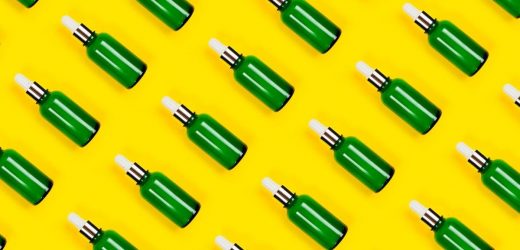i hope this works? #tiktokmademebuyit #fyp #hygiene #skincare #chlorophyllwater #beautytips
You know what they say: a glass of chlorophyll water a day keeps the acne away. (OK, so the “they” in question in this case is TikTok, not your dermatologist.) To follow the handful of other strange-but-effective skin-care trends that have taken over the app in the last year, the latest one to make the rounds involves mixing liquid chlorophyll with ice water and ingesting it under the claim that the pigment we learned so much about in elementary school can help clear your skin.
The chlorophyll water trend has gained a lot of traction on TikTok in the past month, so we obviously saw fit to ask an expert if there’s any truth behind the claims. But before we get to that, let us first remind you of the basics.
“Chlorophyll is what allows plants to convert sunlight to energy, as well as what gives plants their green color,” board-certified dermatologist and chief medical officer at Sanova Dermatology, Ted Lain, MD, told POPSUGAR. “Liquid chlorophyll contains chlorophyllin, which is complexed with copper, ensuring the delivery of actual chlorophyll to the bloodstream.”
So can chlorophyll actually help treat acne? Well . . . kind of.
“Chlorophyll is a potent antioxidant, meaning that it can help reduce the damage caused by stress, the environment, and sunlight,” Dr. Lain said. “We know that acne sufferers do have a higher need for antioxidants in order to reverse the inflammation and damage caused by pimples; therefore, theoretically, there may be a place for topical or ingested chlorophyll in an acne regimen.”
That said, Dr. Lain notes that the data suggesting chlorophyll can be used as an acne treatment is “severely limited,” with one study showing that the ingredient was used to clear acne topically, so if you frequently deal with acne and breakouts, it might be more beneficial to rely on acne treatments that are dermatologist recommended and have been proven to be acne fighters rather than this one.
If this is a hack or trick you’re interested in testing, you should always proceed with caution — or “start with smaller servings to assess tolerability,” Dr. Lain said — to avoid having a reaction, much like you’d do with any new product you’d try out.
Source: Read Full Article


